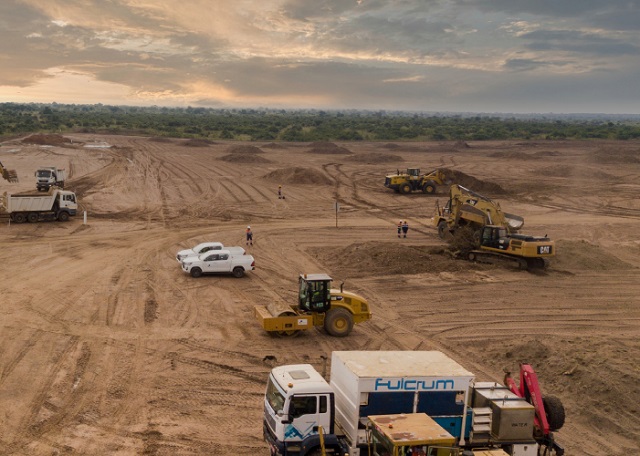
Kampala, Uganda | THE INDEPENDENT | Oil and gas companies and the industry regulators are still confident that Uganda’s first oil will flow by 2025, despite the rising global inflation. Most commodities worldwide have registered rapid price increases starting last year as economies reopened following the COVID-19 induced lockdown.
The situation worsened at the beginning of this year when prices of commodities like fuel and steel rose even faster, a situation blamed on the Russia-Ukraine conflict. The rising fuel prices have in turn affected the cost of transport of equipment and personnel as well as delays, which are expected to affect the development of the oil and gas projects.
Since the start of site preparation works last year, fuel prices have jumped more than 50 percent from about Shillings 3,500 a litre of diesel to Shillings 5,500. Edrisa Kwizera, the head of the Tilenga Oil and Gas Development Area, the project being developed by TotalEnergies, acknowledges that their operational budgets are being affected by the changes.
He however believes that the production timelines are and will not be affected by the changing economic situation, adding that they are still evaluating the impacts for now.
The actual development of projects started after the announcement of the Final Investment Decision by the sector in February this year, a decision that shows that the companies are ready to contract out works for different projects.
Two issues have threatened the actualization of the industry recently; the campaign against the fossil fuel industry by the local and global civil societies, and the uncertainties in the global financial industry.
At least US$ 4.5 billion is planned for investment in the Tilenga project itself, while all projects including the Kingfisher oil project by CNOOC and the East African Crude Oil Project, EACOP will require at least US$15 billion.
The local content policies provide for measures to ensure at least 30 percent of the invested money remains in the Ugandan economy through the hiring of local manpower wherever possible, while some categories of contracts have been ringfenced for Ugandan companies.
Area politician and former MP Stephen Birahwa Mukitale, has criticized the policy implementation, saying it’s not adequate. “As a person from Buliisa, I can tell you that most companies being given Tier 2 and Tier 3 contracts are also owned by foreigners, who hire Ugandans to register them in their names.”
The Uganda Registration Services Bureau says the law provides for scrutiny of the registering promoters of a company, but not who the real owners are, which makes it hard to answer the question. On his part, Kwizera says at the Central Processing Facility in Buliisa, they have so far contracted six Tier 2 and 3 local companies in terms of subcontractors by the bigger Tier 1 companies. He says that of the people employed, 95 percent are Ugandans.
The government and the oil companies have set 2025 as the latest deadline, 15 years since the commercially viable deposits were first discovered. The joint venture companies, TotalEnergies, CNOOC Uganda Ltd, and the Uganda National Oil Company are undertaking major projects in their fields before the midstream projects, EACOP, the Central Processing Facility at Kabaale Industrial Area in Hoima as well as the refinery.
In the upstream, the projects include developing the oil wells, laying of the flow lines which are pipelines that take the unprocessed crude from the wells to the field CPF, and later the feeder pipeline which will take the crude to the Central Processing Facility at Kabaale, from where the crude will be taken to either the export pipeline or the refinery.
The flow-lines pipelines which are between 16 and 18 inches in diameter will have a total network between 180 and 200 kilometers, while the feeder pipeline from Buliisa to Kabaale will be 24 inches wide, and 95km long. He is, however sure that the pace at which the works are ongoing will lead them to beat the 2025 oil production deadline.
The Petroleum Authority of Uganda, PAU, says these and more facilities are expected to be more than 100,000 tons of materials, which provides a big opportunity for the local logistics industry. The developer of the site is also faced with the issue of the dust that rises from the works, affecting the communities around.
Earlier in the year, people from five villages petitioned the Ministry of Health, saying the dust was leading to a rise in respiratory diseases. The PAU said the dust was due to natural factors, as the area was dry and windy. Kwizera says the company contracted to prepare the site, Mota Engil, enhanced the dust containment measures including using water bowsers to keep the ground wet.
*****
URN
 The Independent Uganda: You get the Truth we Pay the Price
The Independent Uganda: You get the Truth we Pay the Price



